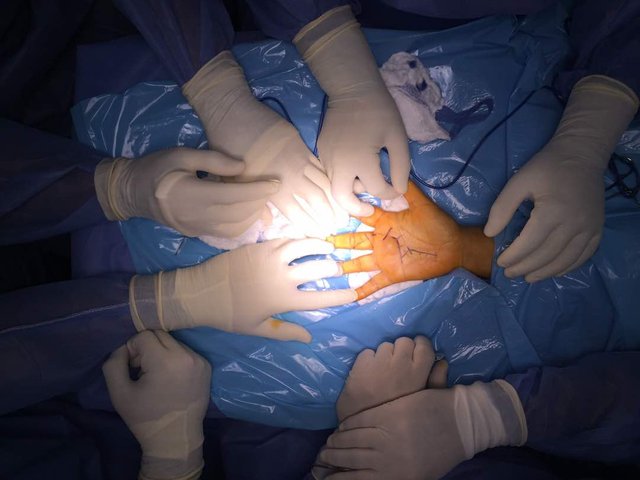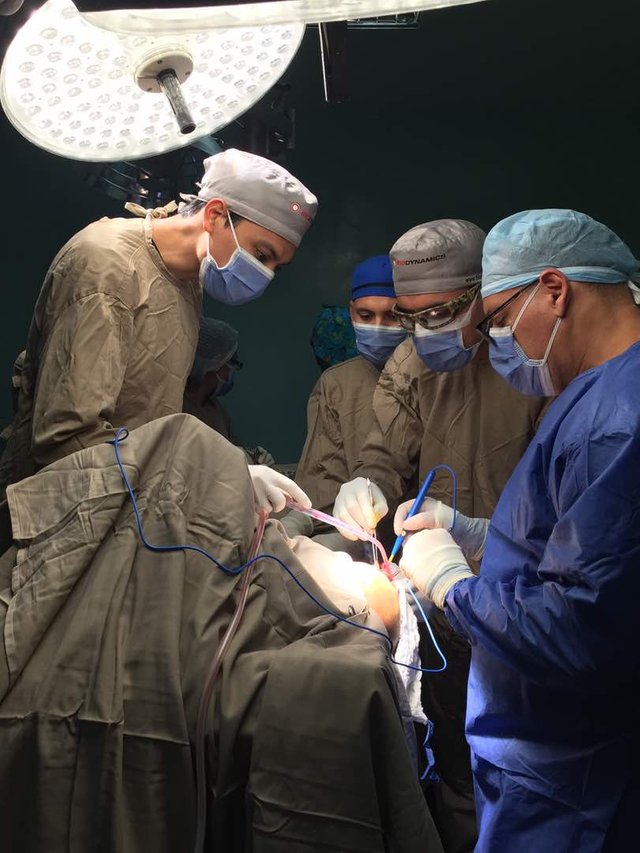Pain management AFTER surgery

Systemic analgesia
Postoperative systemic analgesia should be used in a staggered manner and according to the patient's requirements. If there are no contraindications, NSAIDs are recommended for the management of postoperative pain, since they reduce pain and the consumption of additional analgesics. Its use is recommended in association with strong opioids, such as morphine or fentanyl, for high intensity pain and weak opioids, such as tramadol, in case of low intensity pain. At the same time it is recommended that opioids be combined with non-opioid analgesics in order to reduce their dosage and associated adverse effects. The use of paracetamol is recommended only in combination with other analgesics, as a base treatment for any intensity of pain, as it may decrease additional drug requirements.
A systematic review shows that there is no adequate evidence, given a significant number of studies without the necessary internal and external validity, for decision making in clinical practice or for the development of therapeutic guidelines on the use of analgesic drugs for the management of postoperative pain following traumatic or orthopaedic surgery.

Regional analgesia
Peripheral nerve blocks have recently become the most recommended analgesic technique for major orthopaedic surgery of the lower limb, being proposed as an effective alternative to peridural analgesia or endovenous analgesia for the control of postoperative pain. Peripheral femoral nerve block is recommended by some even over neuroaxial and endovenous techniques, considering the reduction of adverse effects for major orthopedic surgery of the lower extremities.
In the case of total hip arthroplasty, postoperative analgesia can be effectively achieved with a peridural catheter, as well as a lumbar plexus block; both techniques decrease the need for opioids in the postoperative period. Both peridural analgesia and continuous femoral nerve block are more effective than the use of intravenous analgesiia in patients undergoing total hip arthroplasty. Lumbar plexus block is more effective than femoral nerve block for total hip arthroplasty, but with potentially more serious complications, so the risk/benefit should be considered individually when choosing one block over the other.
On the other hand, for total knee arthroplasty, both the continuous epidural technique and the femoral block effectively control postoperative pain while facilitating rehabilitation, being more effective than intravenous analgesia. The benefit of a continuous femoral block versus the use of a single injection is not clear, although some studies classify it as better for reducing postoperative pain, but without differences in functional recovery. However, there are no specific recommendations as to which of the two methods to prefer.
It is important to point out the importance of having a clear protocol to prevent the risk of falls secondary to the muscular block of the quadriceps associated with the femoral block, considering that an additional risk is added to a population that has a greater risk not only of falls, but also of fractures associated with them.
Comparison between different techniques for postoperative analgesia
This review included 83 studies (64 systematic reviews) on the use of peripheral nerve block, spinal analgesia, systemic analgesia, traction, multimodal management, neurostimulation, and complementary and alternative medicine, it was concluded that the use of nerve blocks effectively decreases postoperative pain when compared to not using them, with statistically significant results for peridural analgesia, femoral nerve block, lumbar plexus block and the combination of nerve blocks and non-significant in the case of 3 in 1 femoral block and iliac fascia blocks. No conclusions could be drawn about the remaining interventions analysed, as there is insufficient evidence about their benefits and adverse effects. For other outcomes, there was only a significant decrease in the incidence of delirium when comparing the use of some nerve block versus not using it. There was no significant difference when comparing nerve block with neuroaxial anaesthesia in terms of postoperative pain, additional use of analgesics or delirium.
Dr. Leopoldo Maizo - Orthopedic Surgeon

Firma diseñada por @themonkeyzuelans, contáctalos vía Discord "themonkeyzuelans#9087"
Great projects from the Steemit community:
- My Fundition campaign: https://fundition.io/#!/@drmaizo/6f88ggj8h






.png)
This project is being supported by @Fundition the next-generation, decentralized, peer-to-peer crowdfunding and collaboration platform, built on the Steem blockchain.
Read the full details of Fundition Fund program
Learn more about Fundition by reading our purplepaper
Join a community with heart based giving at its core
Fundition is a non profit project, by supporting it with delegation you are supporting 200+ projects.
50SP100SP200SP500SP1000SP2000SP5000SP10000SP
Thank you for imparting your knowledge in @steemit 🙏🏼🙏🏼🙏🏼
Thanks to you for reading me my friend. Thank you!
The pain is important
Posted using Partiko iOS
And reducing pain is more important.. :)
Congratulations @drmaizo! You have completed the following achievement on the Steem blockchain and have been rewarded with new badge(s) :
Click here to view your Board
If you no longer want to receive notifications, reply to this comment with the word
STOPTo support your work, I also upvoted your post!
Do not miss the last post from @steemitboard: